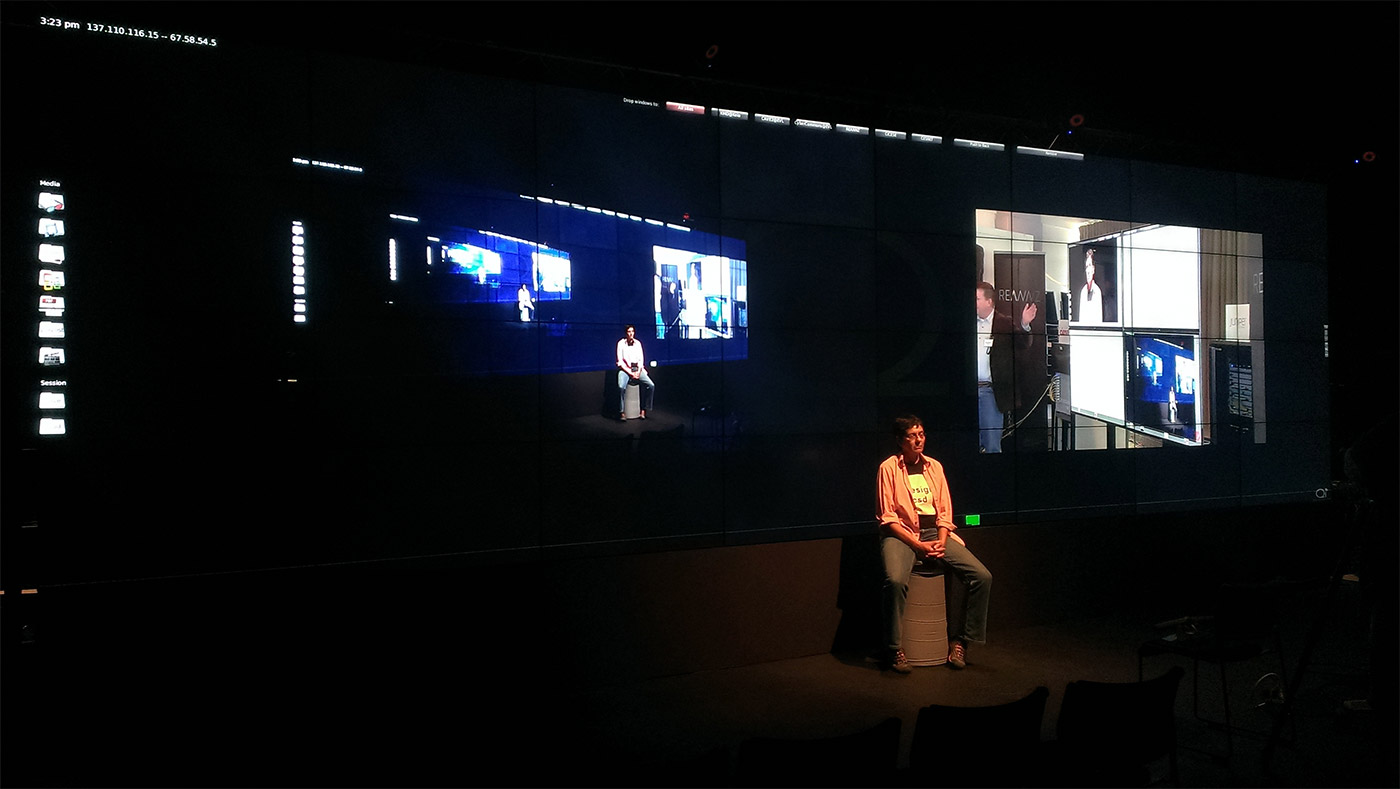GLIF Telemedicine Demo: Up Close and Personal, From Thousands of Miles Away
Published Date
By:
- Tiffany Fox
Share This:
Article Content

With mobile devices in every back pocket and lab coat, it’s a given that patients and their physicians need not be in the same room to interact. But a proof-of-concept demonstration at the University of California, San Diego this week showed that with the right network and visualization technologies, patients need not even be in the same time zone as their physicians in order to obtain a face-to-face medical opinion.
The demo was conducted for participants at the 14th annual Global LambdaGrid Workshop, sponsored by the Global Lambda Integrated Facility (GLIF) and held Monday through Wednesday at the Rydges Lakeland Resort, Queenstown, New Zealand. In attendance was New Zealand-based physician Dr. Stewart Gowland, who used the world’s first 8K (eight times the resolution of HD) tiled display OptIPortal to interact with his mock patient, UC San Diego researcher Deborah Forster. Forster, meanwhile, was thousands of miles away at the university’s Qualcomm Institute, where she discussed her concerns about a mole on her left eyelid with the doctor and the audience in real-time via the 64-megapixel Virtual Room (VROOM).
Elsewhere in Chicago, dermatologist Dr. Marvin Margolis – a specialist in skin disorders such as melanoma – stood by at the University of Illinois, Chicago’s Electronic Visualization Laboratory, where he could see and interact with both the physician in New Zealand and Forster in San Diego via the 72-megapixel CAVE 2.0, an immersive visualization space. Dr. Margolis was able to see (via his display) a high-resolution image of Forster’s mole, and in a matter of minutes had diagnosed it as non-threatening. Dr. Margolis called the technology “impressive” and remarked that his display provided “an excellent picture.”
“The clarity of the image is as good as having the patient in front of me, and with very little lag time,” he added. “I think this technology is of the present, rather than of the future.”
This was all made possible by UltraGrid (an open source video transport platform) as well as a new 100 gigabit per second network being deployed across the Pacific by REANNZ – a provider of high-performance network services for New Zealand’s research and education communities– via the Southern Cross Cable. The network’s capacity is more than 4,000 times faster than basic residential broadband and 1,000 times faster than ultra-fast broadband currently available in New Zealand. It’s also the longest 100Gbps research network yet, spanning some 20,500 km between Queenstown and California
A significant reduction in cost for the off-the-shelf visualization components is also a major factor in making the technology feasible. The 8K OptIPortal system, for example – which was constructed by REANNZ and is comprised of four 4K displays – cost upward of $50,000 two years ago. Now it costs only $1,200.
Hosting the demo was GLIF Program Committee Member Jeff Weekley of CineGrid, a non-profit international membership organization focused on connecting people around the world who are experimenting with "extreme" digital media. CineGrid holds its annual International Workshop at the Qualcomm Institute each December.
Weekley, who is himself a melanoma survivor, noted that the participants in the demo hadn’t prepared a script and “interacted in a very natural way.”
“The technology was not in their way,” he added. “I call it ‘virtualizing the patient-doctor interface.’ The technology becomes transparent, the distance collapses and we all behave as if we were in the same room at the same time. If we can do this from San Diego to Chicago to Queensland and back, we can do it anywhere.”
Share This:
Stay in the Know
Keep up with all the latest from UC San Diego. Subscribe to the newsletter today.



